Energy Materials, Technologies & Sustainable Recycling Strategies
Joint Workshop 4TU.Energy & 4TU.High-Tech Materials took place at 13 May 2025
This joint workshop with 4TU.Energy was targeted to early stage researchers to meet and find their common ground on energy materials and sustainable recycling strategies; it was an opportunity to get together to share knowledge and explore collaborations.
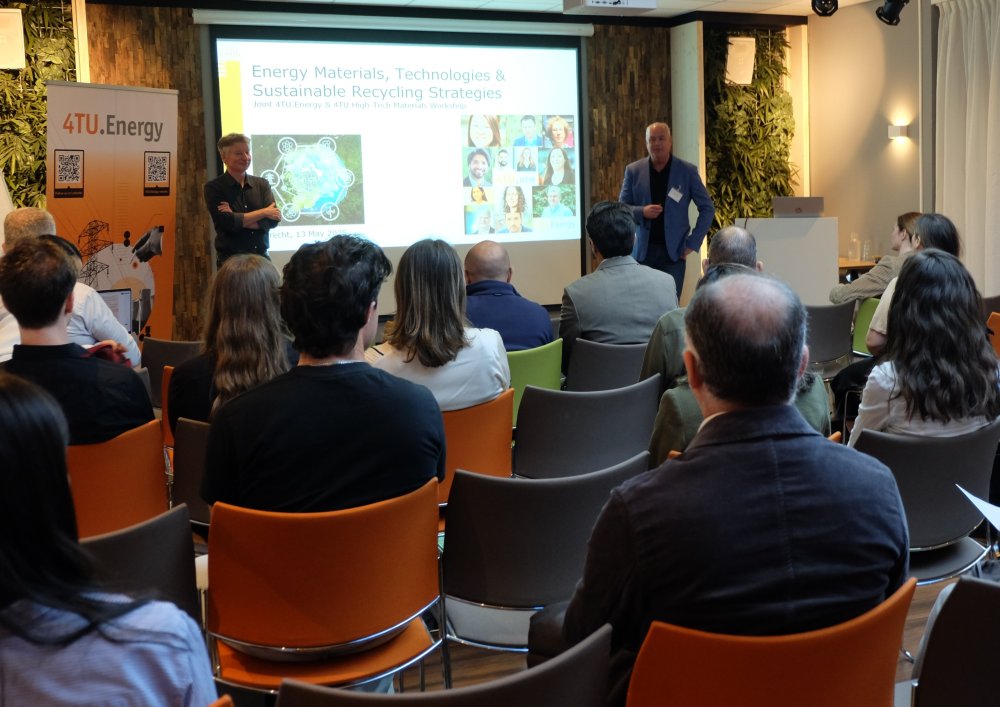
We are proud of the successful collaboration with 4TU.Energy in both content and organization. Stay tuned for future workshops and joint initiatives, including potential funding proposals!

Key topics
- Materials for Electrochemical Applications & Electrochemistry,
- Materials for Fuel Cells,
- Materials for Electrolysers,
- Materials for CO2 Capture & Conversion
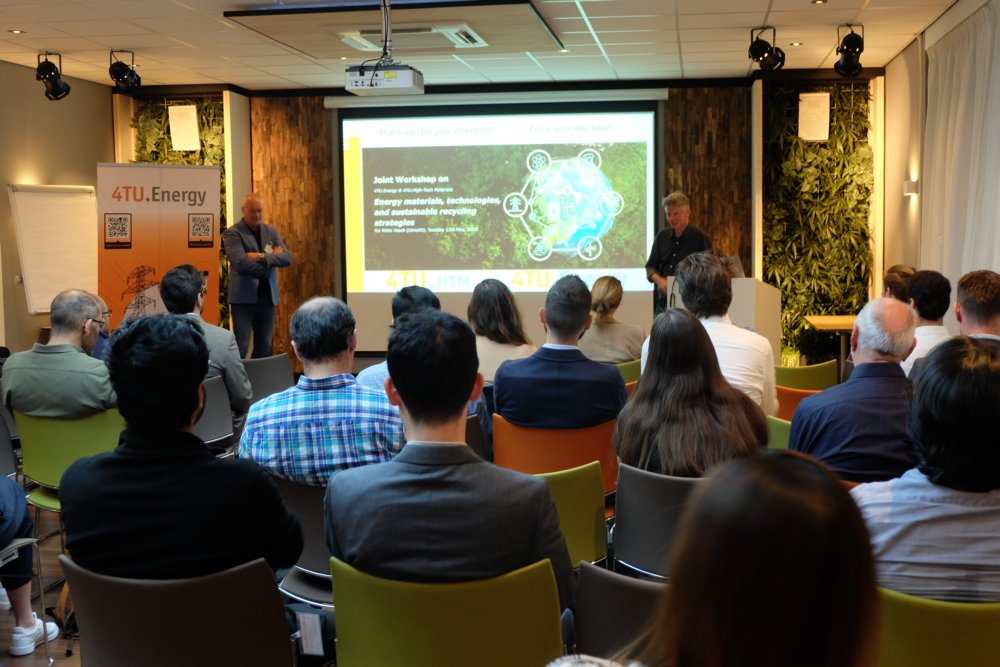
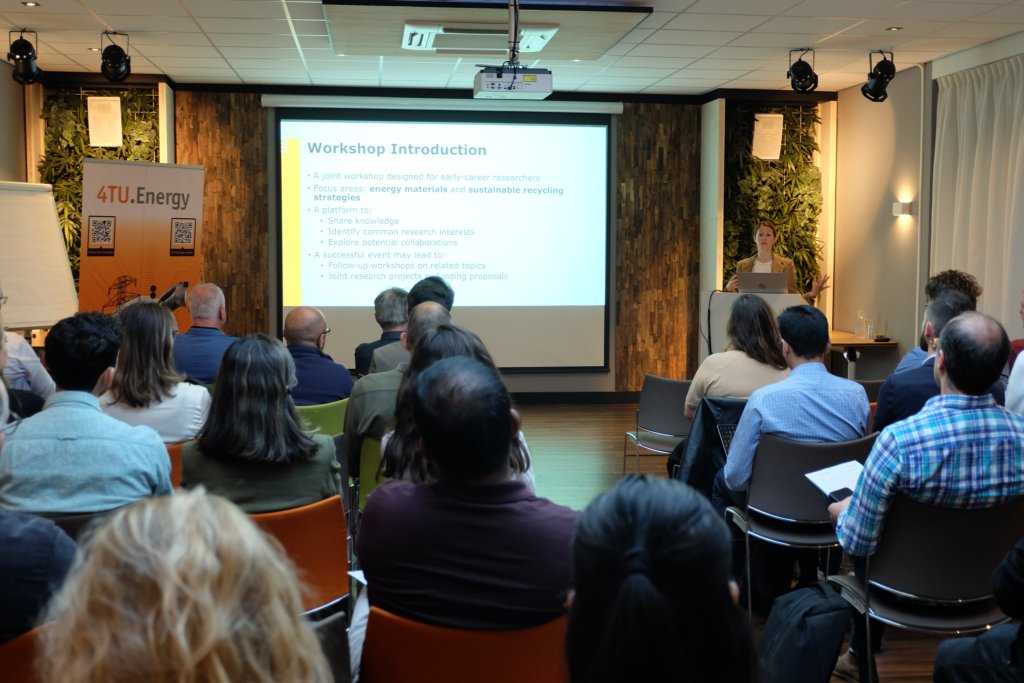
Information - Plenary speakers
Marta Costa Figueiredo (TU/e)
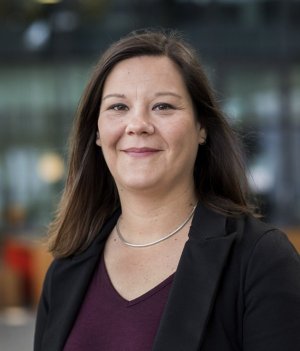 Dr. Marta Costa Figueiredo is an assistant professor at the Chemical Engineering and Chemistry Department at Eindhoven University of Technology
Dr. Marta Costa Figueiredo is an assistant professor at the Chemical Engineering and Chemistry Department at Eindhoven University of Technology
Title: Material challenges in electrocatalysis – unravelling active sites
Abstract
Determination of active sites in electrocatalysis is a crucial aspect of understanding and enhancing the performance of electrocatalysts [1][2]. Active sites are the specific locations on the catalyst's surface where electrochemical reactions occur, playing a key role in determining the catalyst's efficiency and selectivity. Identifying these sites typically requires a combination of experimental techniques. Common methods include spectroscopic techniques such as X-ray photoelectron spectroscopy (XPS) and infrared spectroscopy (IR), which provide information on the chemical environment and electronic states of the surface atoms. Additionally, advanced microscopy techniques like scanning tunneling microscopy (STM) and transmission electron microscopy (TEM) can visualize the surface structure at the atomic level. Understanding the nature and behavior of active sites enables the rational design and optimization of electrocatalysts, leading to improved performance in various applications.
In this talk, I show some examples of our research on the challenges to understand and identify the nature of the catalytic site for several reactions of interest: CO2 electroreduction, Nitrate reduction and oxygen evolution reaction (OER).
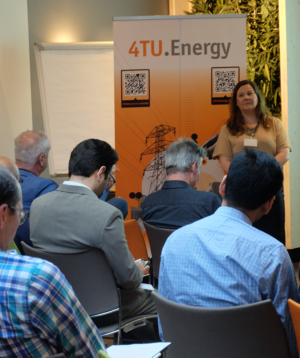 References
References
[1] Bandarenka, A. S.; Koper, M. T. M. Structural and Electronic Effects in Heterogeneous Electrocatalysis: Toward a Rational Design of Electrocatalysts. J Catal 2013, 308, 11–24.
[2] Koper, M. T. M. Structure Sensitivity and Nanoscale Effects in Electrocatalysis. Nanoscale 2011, 3, 2054
Short bio
Marta Costa Figueiredo has been an assistant professor at the Chemical Engineering and Chemistry Department at Eindhoven University of Technology (TU/e) since April 2019. Her research focuses on electrochemical interface engineering and electro(catalytic) synthesis for sustainable processes and the production of high-value chemicals, including fuels and organic molecules, from waste substrates such as carbon dioxide and biomass. She has a PhD in Electrochemical Science and Technology from the University of Alicante, Spain. After completing her PhD in 2012, Marta was a postdoctoral researcher at various universities in Europe, including Aalto University (Finland), Leiden University (Netherlands), and University of Copenhagen (Denmark). From 2017 to 2019, prior joining TU/e, she was a Scientist at Avantium (Netherlands), working on the development and scale-up of CO2 electrochemical conversion technologies.
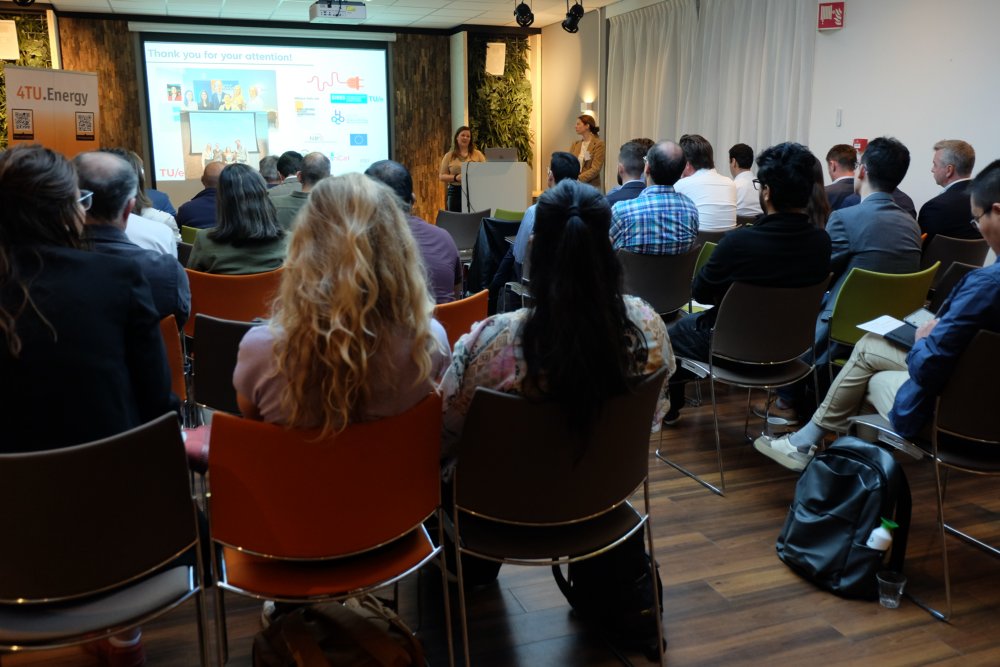
Harry Bitter (WUR)
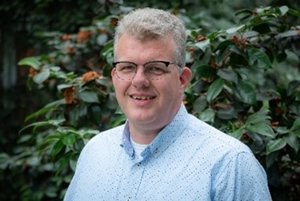 Prof. dr. Harry Bitter is full professor Bioobased Chemistry and Technology at Wageningen University and Research
Prof. dr. Harry Bitter is full professor Bioobased Chemistry and Technology at Wageningen University and Research
Title: Supported potassium carbonate and dual functional materials for direct air capture and conversion*
Abstract
Direct air capture (DAC) of CO₂ is one of the ways to lower the CO2 levels in the atmosphere. Here I will show how the performance of K₂CO₃ supported on carbon nanofibers (CNF) is influenced by the particle size of K₂CO₃ and the polarity of the carbon support. It will be shown that smaller K₂CO₃ particles enhance CO₂ adsorption efficiency. In addition a too high surface polarity—induced by oxygen-containing functional groups—has a negative impact on performance due to increased water adsorption. Lastly, the introduction of Ru into the K₂CO₃/CNF system creates active sites that temporarily retain CO₂ during CO2 desoprtion in H2 (as CO) on Ru sites (the CO2 desorbed to the gasphase in N2), allowing its subsequent hydrogenation to methane.
*with Freek Karaçoban, Torin de Groot, Tomas van Haasterecht
Short bio
Harry Bitter is full professor at Wageningen University and Research. He is holding the chair Biobased Chemistry and Technology. Within the chair he focuses on sustainable catalytic conversions and (extraction) processes on multiple length scales using a multidisciplinary approach. In his group he combines chemical (laboratory) approaches with computational approaches (from DFT to conceptual process design). Harry published about 220 papers, is involved in 5 patent applications, and teaches courses in (in)organic chemistry, catalysis, and biobased economy. In addition Harry is among others board member of the Royal Dutch Chemical Society (KNCV), chairman elect of the Dutch Research School on Catalysis (NIOK).
He studied chemistry in Nijmegen in the Netherlands with a major in organic chemistry and a minor in organometallic chemistry. Subsequently, he performed his PhD research at the University of Twente where he worked on Pt/ZrO2 based catalyst for the dry-reforming of CH4 with CO2 to syngas. After his PhD Harry joined the Utrecht University as junior staff member where he continued working in the field of heterogeneous catalysis focusing on the use of X-Ray spectroscopy in catalysis. From 1999-2013 he was a scientific staff member at Utrecht University in the group of Inorganic Chemistry and Catalysis. His research focused on the use of carbon-based catalysts both in fossil feedstock conversion and (later) in biomass-based conversions.
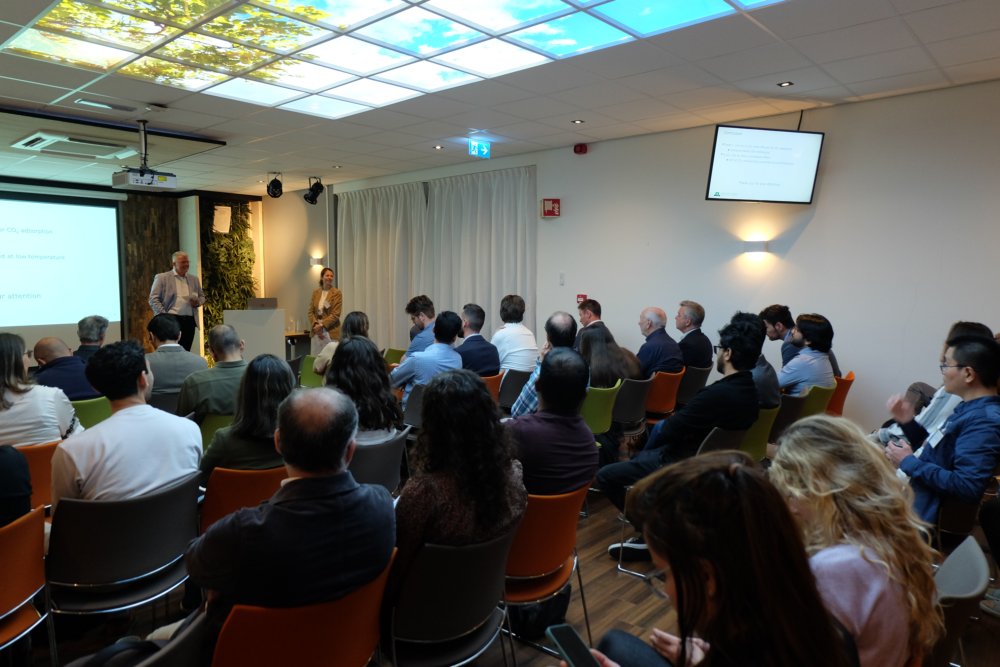
Shoshan Abrahami (TUD)
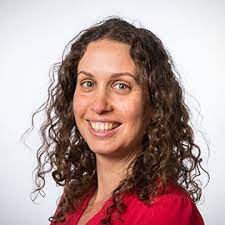 Dr. Shoshan Abrahami is an assistant professor in the Department of Materials Science and Engineering, Faculty of Mechanical Engineering at Delft University of Technology
Dr. Shoshan Abrahami is an assistant professor in the Department of Materials Science and Engineering, Faculty of Mechanical Engineering at Delft University of Technology
Preliminary title: Recycling Strategies for Energy Materials
Abstract
High-tech applications are vital to the energy transition, yet many of the critical materials they depend on—such as those found in lithium-ion batteries, rare-earth magnets, and printed circuit boards—are scarcely recycled. The diversity of materials and the complexity of these components pose significant technical and economic challenges for their recovery. To reduce reliance on primary raw materials and close the materials loop, efficient and targeted recycling processes are urgently needed. In this talk, I will adders several strategies for value-added recycling, focusing on sustainable extraction and recovery methods. Drawing on recent research from our group, I will present case studies that demonstrate both the challenges and opportunities of advanced recycling.
Short bio
Shoshan Abrahami is an Assistant Professor in the Department of Materials Science and Engineering at TU Delft, where she has been based since 2020. Her research is driven by the goal of enhancing materials circularity, with a focus on sustainable extraction and recycling using hydrometallurgical and electrochemical methods. Her group develops innovative recycling processes for critical materials central to the energy transition, including those found in lithium-ion batteries, rare-earth magnets, and electronic waste. Bridging fundamental and applied science, her work aims to close the materials loop through value-added recycling strategies.
She holds a PhD from TU Delft, where she studied alternatives to hexavalent chromium in surface pre-treatments for aerospace metals. She subsequently continued her research at the Vrije Universiteit Brussel (VUB), receiving an FWO postdoctoral fellowship in 2017 to investigate hybrid metal(oxide)/polymer interfaces, including a year as a guest researcher at Chimie ParisTech.
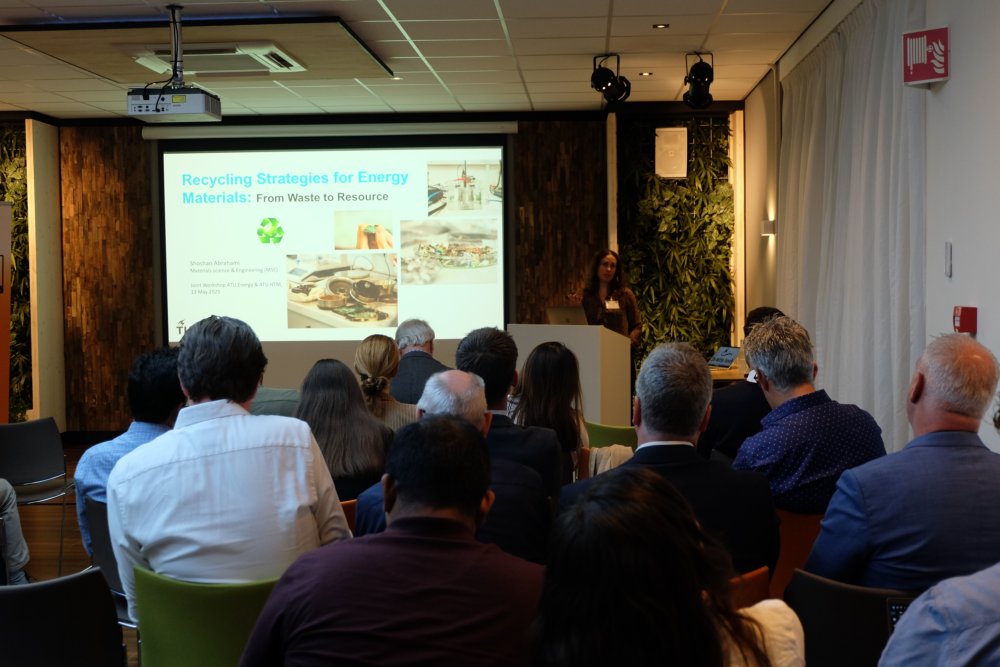
Ian Gibson (UT)
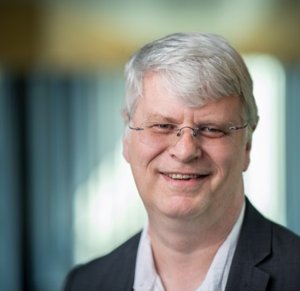 Prof. dr. Ian Gibson is full professor in Design Engineering at the Faculty of Engineering Technology and chair of Advanced Manufacturing, Sustainable products & Energy systems (AMSPES) in the Department of Design, Production, and Management (DPM) at the University of Twente
Prof. dr. Ian Gibson is full professor in Design Engineering at the Faculty of Engineering Technology and chair of Advanced Manufacturing, Sustainable products & Energy systems (AMSPES) in the Department of Design, Production, and Management (DPM) at the University of Twente
Title: Remanufacturing: a new challenge for AM
Additive Manufacturing represents a group of technologies that can make parts in very different ways to conventional methods. Many different application domains have been considered over the 30+ years that this technology has been available. One of these is the ability to repurpose products so that they may have extended and enhanced life. Although this concept is not new, with only a limited number of successes to date, perhaps as the technology has evolved it now has the potential for increased use. This presentation will discuss new research initiatives that may enable more remanufacturing using AM.
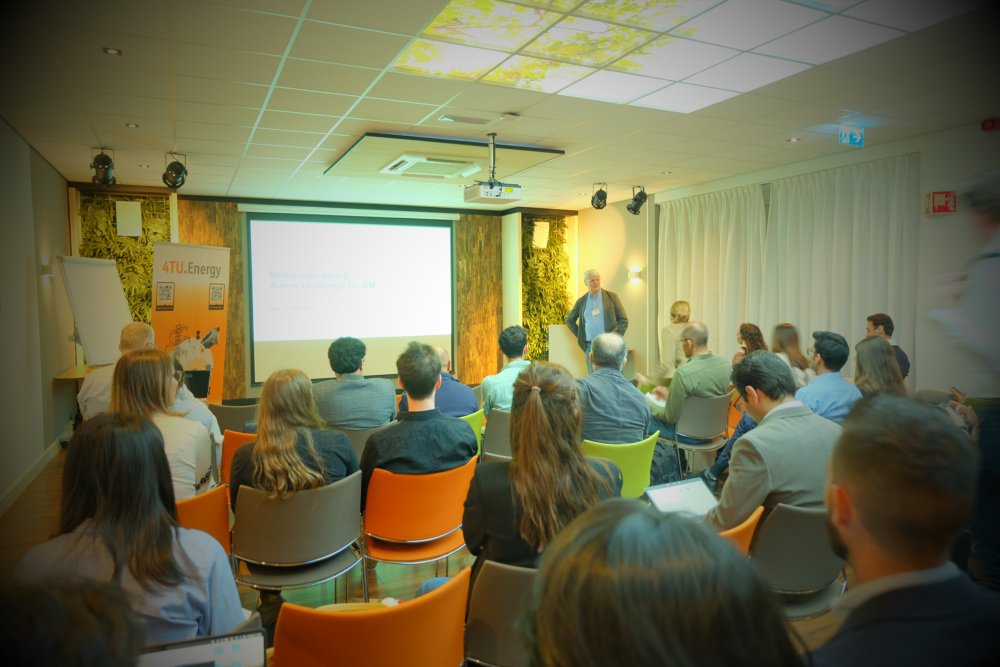
Marco Altomare
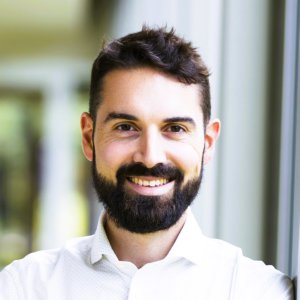 Marco Altomare is Associate Professor at the Department of Chemical Engineering and MESA+ Institute for Nanotechnology at the University of Twente
Marco Altomare is Associate Professor at the Department of Chemical Engineering and MESA+ Institute for Nanotechnology at the University of Twente
Title: Studying water electrolysis with model nanoparticle electrodes designed by solid-state dewetting
Abstract
Supported metal nanoparticles are of wide scientific and technological interest. In electrocatalysis, wet chemistry methods are commonly used to synthesize metal nanoparticle slurries, so-called catalyst “inks”. While practical for manufacturing electrodes, catalyst inks feature complex, often undefined, physicochemical and mass transport properties [1]. This makes it challenging to assess the catalyst intrinsic activity, and to decouple it from, e.g., non-kinetic factors.
In this framework, solid-state dewetting [2,3], i.e., the heat-induced agglomeration of thin metal films under controlled conditions, is a powerful nanofabrication tool for supported metal nanoparticles. My talk shows the use of solid-state dewetting to produce model, binder-free, nanoparticle electrodes with minimized chemical and material complexity, i.e., featuring defined nanoparticle loading, size, structure, and composition [4]. I discuss the use of dewetted nanoparticle electrodes to study nanoscale effects such as metal/support interactions [5], and the role of catalyst exposed facets [6] and lattice strain, in model electrocatalytic reactions.
References
[1] A.R. Akbashev, ACS Catal. 2022, 12, 8, 4296
[2] C.V. Thompson, Annu. Rev. Mater. Res. 2012, 42, 399
[3] Altomare et al., Chem. Sci. 2016, 7, 6865
[4] Harsha et al., 2023 Meet. Abstr. MA2023-02 2779
[5] Harsha et al., Adv. Funct. Mater. 2024, 2403628
[6] Sharma et al., 2023 Meet. Abstr. MA2023-02 2059
Short bio
Before joining the University of Twente, Marco Altomare obtained BSc, MSc and PhD degrees from the University of Milan, Italy, after which he was postdoctoral researcher and Habilitation candidate at the FAU University of Erlangen-Nuremberg, Germany. The research of his group bridges nanotechnology and materials chemistry at the nanoscale with heterogeneous catalysis for the sustainable production of fuels and chemicals. His work deals with physical vapor deposition and solid-state dewetting methods to design defined nanostructured catalysts, such as model thin film and nanoparticle systems. He combines this with in-situ X-ray characterization techniques, to elucidate structure-performance relationships and investigate the active sites’ nature and catalyst stability in electrocatalytic and photocatalytic reactions.
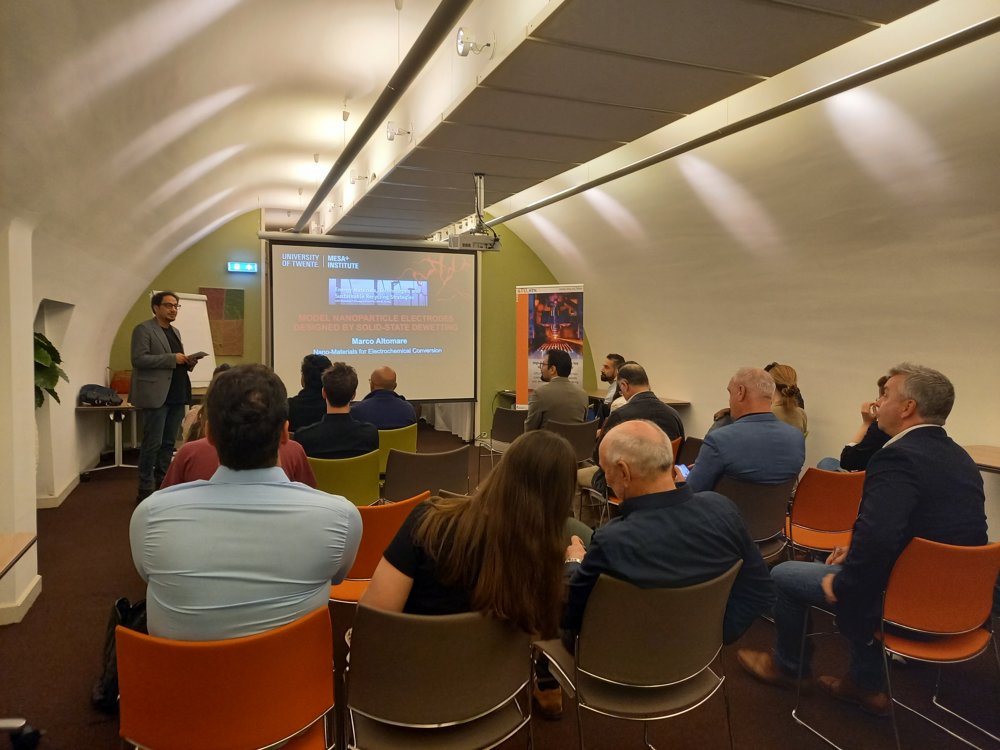
Aayan Banerjee
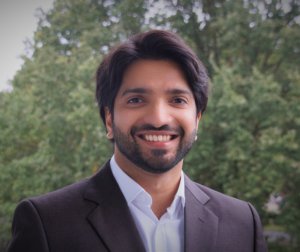 Aayan Banerjee is an Assistant Professor Catalytic Processes and Materials in the Department of Chemical Engineering of the Faculty of Science and Engineering at the University of Twente
Aayan Banerjee is an Assistant Professor Catalytic Processes and Materials in the Department of Chemical Engineering of the Faculty of Science and Engineering at the University of Twente
Title: Decoding high temperature ceramic fuel cells and electrolysers
Abstract
High temperature ceramic membrane-based fuel cells and electrolysers have a lot going for them: they have the high energy efficiencies of all electrochemical devices and their operating temperature range of 400-900 ˚C facilitates thermal integration with a range of key industrial processes. These advantages make them increasingly attractive for powering the low-carbon energy and feedstock transition. However, their market adoption is still minimal due to high costs and low lifetimes. To improve these metrics, my group looks to better understand the entire technology development chain from materials to systems. In this talk, I will discuss the integrated multiscale multiphysics modelling framework we have developed to do so and dive deeper into the material and cell design of proton conducting ceramic fuel cells and the techno-enviro-economic impact of upscaling various oxide-ion conducting ceramic electrolysis cell architectures.
Reference
A. Banerjee, Integrated Multiscale Modeling of Solid Oxide Electrodes, Cells, Stacks, and Systems, Chem. Ing. Tech., 94(5), 2022, pp 766-773
Elsa Best
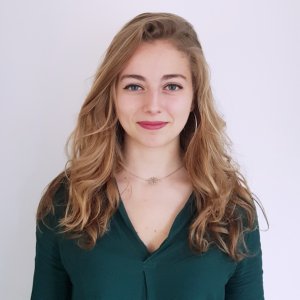 Elsa Best is a PhD researcher in the Metals Production, Refining and Recycling and the Corrosion Technology and Electrochemistry groups of the Department of Materials Science and Engineering, Faculty of Mechanical Engineering, at Delft University of Technology
Elsa Best is a PhD researcher in the Metals Production, Refining and Recycling and the Corrosion Technology and Electrochemistry groups of the Department of Materials Science and Engineering, Faculty of Mechanical Engineering, at Delft University of Technology
Title: Degradation Mechanisms and Circular CO₂ Valorization in the Electrochemical Recycling of CFRP Using Porous Copper Catalysts
Abstract
With the increasing use of carbon fiber reinforced polymers (CFRPs) in sectors such as aerospace, automotive, and sports, developing a sustainable solution to recycle them has become a significant challenge. In this presentation, I will introduce my research project, which focuses on optimizing the electrochemical recycling of CFRPs through a dual approach: understanding the degradation mechanisms and maximizing the value of secondary products.Electrochemichal recycling of CFRPs is promising method that still requires further optimization and understanding. My research pays a particular attention to the degradation of both the carbon fibers and the polymer matrix. To investigate this, videos of CFRP samples degrading under different potentials and for several duration are recorded. These visual observations, combined with scientific analyses, provide insight into the material's degradation over time and contribute to a deeper understanding and optimization of this recycling method. Another key aspect of this project is the valorization of liquid and gaseous by-products generated during the process, especially CO2. Its electrochemical reduction into hydrocarbons using porous copper-based catalysts is being explored as a route for value recovery. In this context, several copper samples with varying porosities have been manufactured and and are being tested to evaluate their catalytic performance.
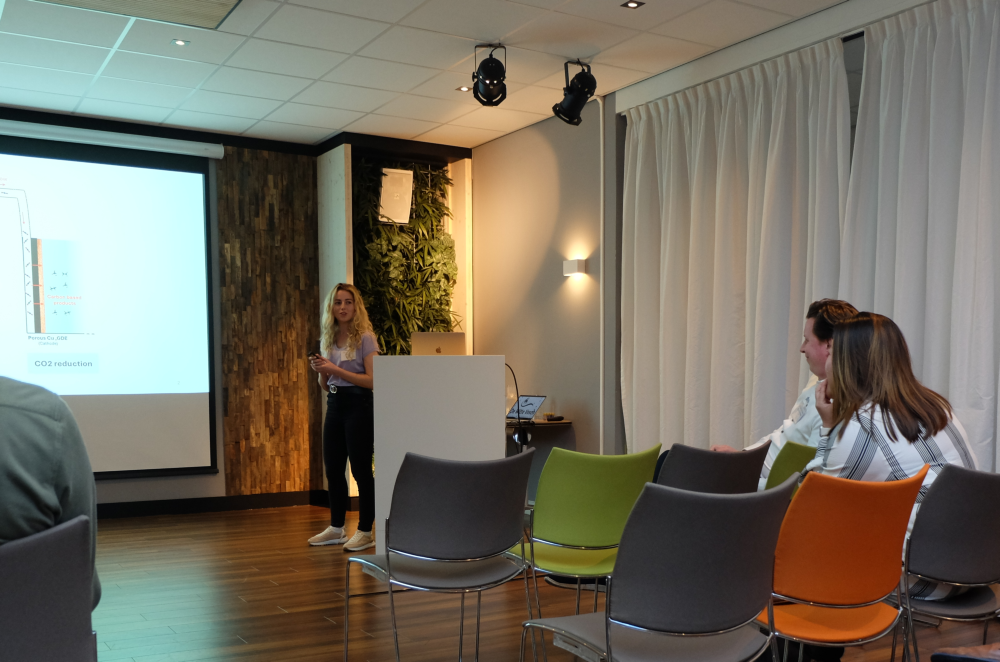
Vassilis Kyriakou
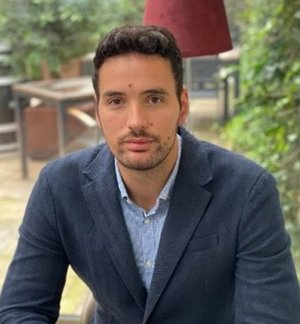 Vassilis Kyriakou is an Assistant Professor in Energy Conversion and Processes at the Engineering and Technology Institute Groningen (ENTEG) of the University of Groningen
Vassilis Kyriakou is an Assistant Professor in Energy Conversion and Processes at the Engineering and Technology Institute Groningen (ENTEG) of the University of Groningen
Title: Rationally Designed Electrocatalytic Materials for Ionic Ceramic Membrane Reactors towards Highly Efficient Power2X Transformations
Abstract
In chemical energy storage schemes, electrical power is converted into chemical energy carriers and vice versa, allowing grid flexibility by backing up intermittent electricity of renewable energy sources. Once the excess renewable energy is stored into chemical bonds, several pathways are opened for both re-electrification and mobility. For such storage, the electrosynthesis of chemicals or fuels from sustainable molecules of water, carbon dioxide, nitrogen and biomass might be promising for a carbon-neutral energy future. In this talk, I will present how tailored mixed ionic electronic electrocatalysts can perform such transformations in oxide ion- and proton- conducting ceramic cell reactors, operating at temperatures closer to industrial relevance. Focus will be given on nanoengineered perovskite oxides prepared by redox exsolution that allow promising performance and stability in harsh environments. The proposed approaches aim to bridge electrochemistry and heterogeneous catalysis, while exemplifying a route for enabling electrosynthesis by possibly exploiting waste industrial heat at high temperatures.
References
[1] D. Neagu et al., In Situ Observation of Nanoparticle Exsolution from Perovskite Oxides: From Atomic Scale Mechanistic Insight to Nanostructure Tailoring. ACS Nano 2019, 13, 11, 12996–13005
[2] V. Kyriakou et al., Symmetrical Exsolution of Rh Nanoparticles in Solid Oxide Cells for Efficient Syngas Production from Greenhouse Gases. ACS Catal. 2020, 10, 2, 1278–1288
[3] Nannan Li et al., Opportunities and challenges for direct electrification of chemical processes with protonic ceramic membrane reactors. Prog. Energy 2024 6 043007
Short bio
Vassilis Kyriakou holds a PhD in Chemical Engineering, from the Aristotle University of Thessaloniki and he has been a postdoctoral researcher in Yildiz Lab at MIT, the Dutch Institute for Fundamental Energy Research (DIFFER), and CERTH. Vassilis’ research focuses on electrochemical reaction engineering, catalysis and materials for solid oxide, protonic ceramic and AEM cells towards the production of chemicals, fuels and/or power from sustainable feedstocks. He is currently involved in several important projects on high temperature electrolysers and fuel cells in the Netherlands and EU.
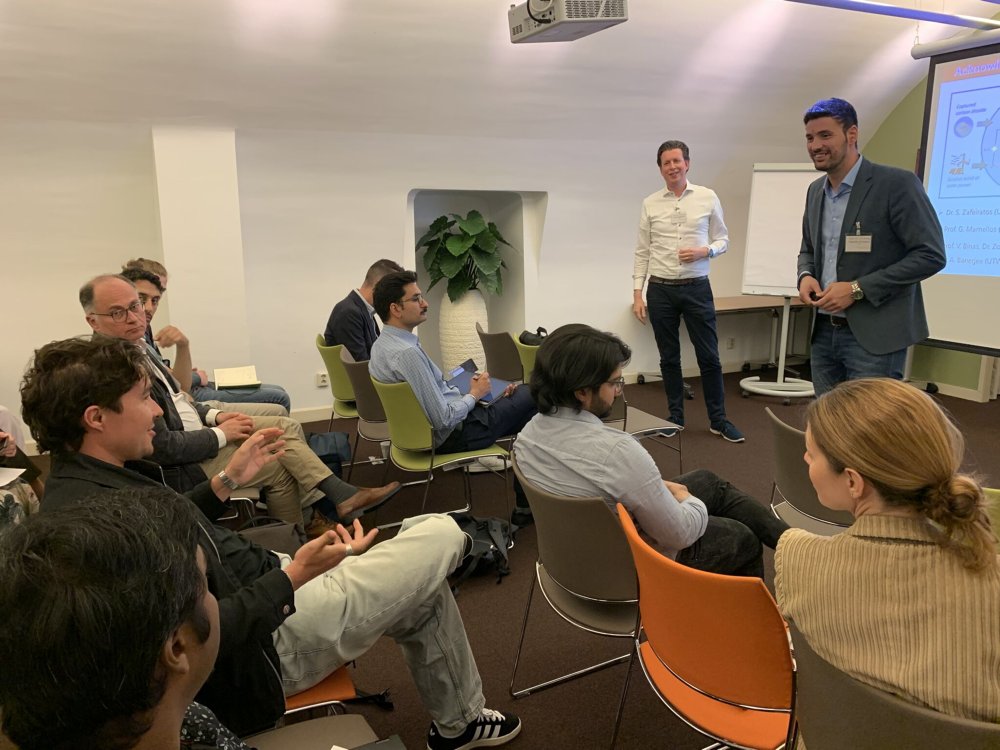
Khatereh Roohi
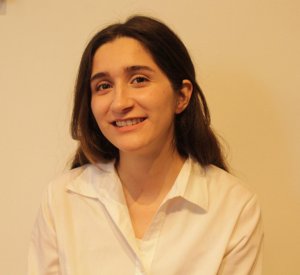 Khatereh Roohi is a PhD researcher in the Corrosion Technology and Electrochemistry group of the Department of Materials Science and Engineering, Faculty of Mechanical Engineering, at Delft University of Technology
Khatereh Roohi is a PhD researcher in the Corrosion Technology and Electrochemistry group of the Department of Materials Science and Engineering, Faculty of Mechanical Engineering, at Delft University of Technology
Title: Planar [Cu-S]-Organic Framework for Selective and Low-Overpotential CO2 to Formate Reduction
Abstract
Recent developments in electrochemical CO₂ reduction reaction (CO2RR) technologies open up new possibilities for utilizing CO₂ as a carbon feedstock for the production of fuels and commodity chemicals [1]. A wide range of electrocatalysts have been investigated for aqueous ECR, including metals, alloys, metal oxides/phosphides, doped carbon materials, and polymers. Among these, metal-organic frameworks (MOFs) have attracted considerable research attention due to their metal-centered active sites, large surface area resulting from high porosity, and highly tunable chemical and morphological properties [2]. Herein, we present the synthesis of an innovative copper–sulfur planar structure, Cu–S–BDC, within a MOF catalyst, which exhibits 100% selectivity toward formate as the sole carbon product. Structural analysis and surface characterization reveal that Cu–S–BDC features quasi-two-dimensional inorganic building units, where copper is coordinated to two S–CH₃ groups and one BDC linker, with carboxylate groups adopting a bridging coordination mode. This unique configuration achieves a Faradaic efficiency (FE) of 92% for formate at an overpotential as low as –0.4 V vs. the reversible hydrogen electrode (RHE) in 1 M KOH aqueous electrolyte, and a current density of –25.8 mA/cm² at –0.9 V vs. RHE, averaged over 24 hours of electrolysis. This study offers a new perspective in the field of MOF electrocatalysts by demonstrating that engineering the metal coordination environment can significantly enhance the electronic properties - and consequently, the electrocatalytic performance - of these materials.
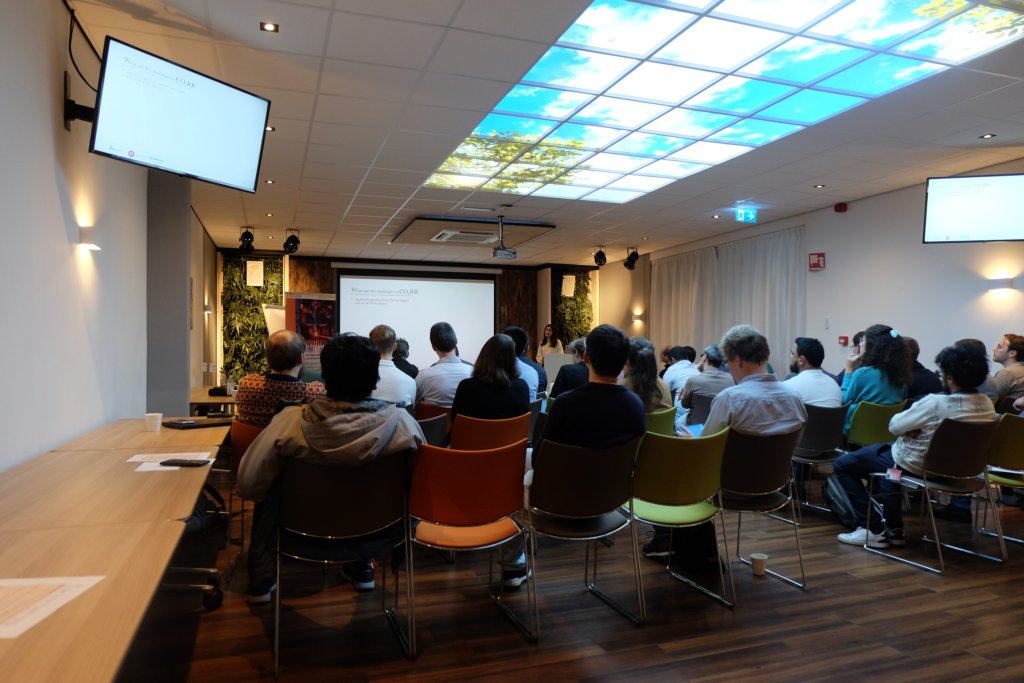
Louis de Smet
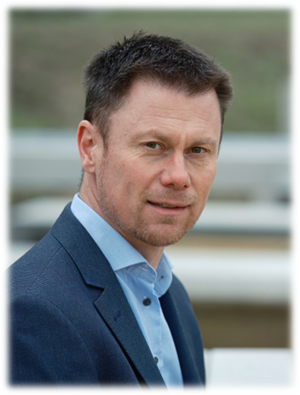 Louis de Smet currently holds a Personal Chair in ‘Advanced Interfaces and Materials’ at Wageningen University
Louis de Smet currently holds a Personal Chair in ‘Advanced Interfaces and Materials’ at Wageningen University
Title: Amine-Functionalized Covalent Organic Frameworks (COFs) for CO2/N2 Separation and CO2 Capture
Abstract
Two decades of Covalent Organic Frameworks (COFs) have shown how powerful these materials can be in chemistry and materials science [1]. Built from lightweight elements, COFs consist of organic nodes and linkers connected by strong covalent bonds to form stable, porous, high-surface structures that can be tailored for many uses, including gas storage, catalysis, sensing, and energy applications.
This presentation addresses the elegance of amine-functionalized COFs that selectively interact with CO2. The main focus is on their design, characteristics and function. First, a non-functionalized, imine-based COF was modified into an amine-functionalized COF by dynamic linker exchange.2 While the introduction of the new linker slightly impacted the material’s surface area, a clear CO2/N2 selectivity was observed. To this end, we developed and employed graphical user interface software for Ideal Adsorption Solution Theory (IAST) calculations (GraphIAST).3 To further highlight the applicability of amine-functionalized COFs, we conclude with a discussion of very recent work of the COF father, Professor Omar Yaghi, who designed an amine-functionalized COF via the in-pore polymerization of an amine monomer, resulting in porous nanomaterial that effectively captures CO2 from open air.4,5
References
[1] Exploring high-connectivity three-dimensional covalent organic frameworks: topologies, structures, and emerging applications, Che, F.; Zheng, H.; Yusran, Y.; Li, H.; Qiu, S.; Fang, Q. Chem. Soc. Rev. 2025, 54, 484-415.
[2] Aromatic amine-functionalized covalent organic frameworks (COFs) for CO2/N2 separation, Dautzenberg, E.; Li, G.; de Smet, L.C.P.M. ACS Applied Materials & Interfaces 2023, 15, 5118-5127.
[3] GraphIAST: A graphical user interface software for Ideal Adsorption Solution Theory (IAST) calculations, Dautzenberg, E.; van Hurne, S.; Smulders, M.M.J.; de Smet, L.C.P.M. Computer Physics Communications 2022, 280, 108494.
[4] Carbon dioxide capture from open air using covalent organic frameworks, Zhou, Z.; Ma, T.; Zhang, H.; Chheda, S.; Li, H.; Wang, K.; Ehrling, S.; Giovine, R.; Li, C.; Alawadhi, A.H.; Abduljawad, M.M.; Alawad, M.O.; Gagliardi, L.; Sauer, J.; Yaghi, O.M. Nature, 2024, 635, 96-101.
[5] ‘De man die drinkwater uit droge lucht haalt’, George van Hal, Volkskrant, April 19, 2025 [link to online version, April 18, 2025]
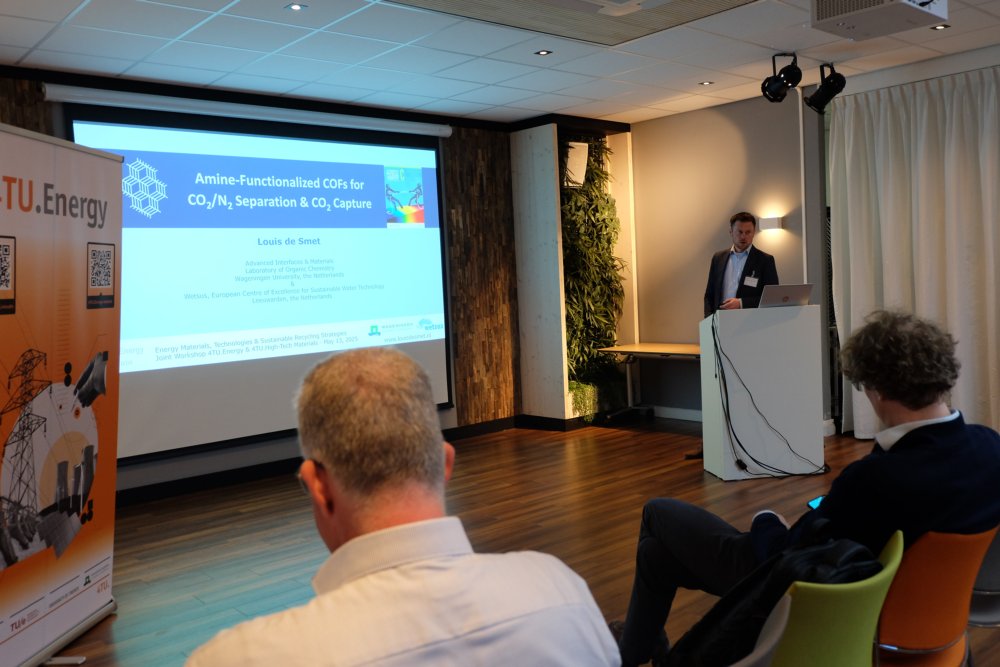
Claas Willem Visser
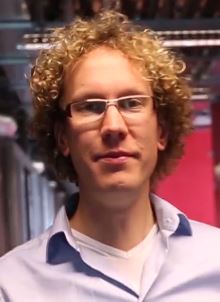 Claas Willem Visser is an Associate Professor in Thermal and Fluid Engineering at the Faculty of Engineering Technology of the University of Twente
Claas Willem Visser is an Associate Professor in Thermal and Fluid Engineering at the Faculty of Engineering Technology of the University of Twente
Title: Towards scalable fabrication of non-adhesive hydrogel particles for CO2 capture and release
Short bio
Claas Willem Visser develops multi-scale functional materials, by converting fluid droplets or bubbles into solid "building blocks" and stacking these. The multi-scale nature of these materials enables optimizing their mechanical, acoustic, electrical, and biological properties for various applications. He leads a small team on this topic since 2018, currently as associate professor.
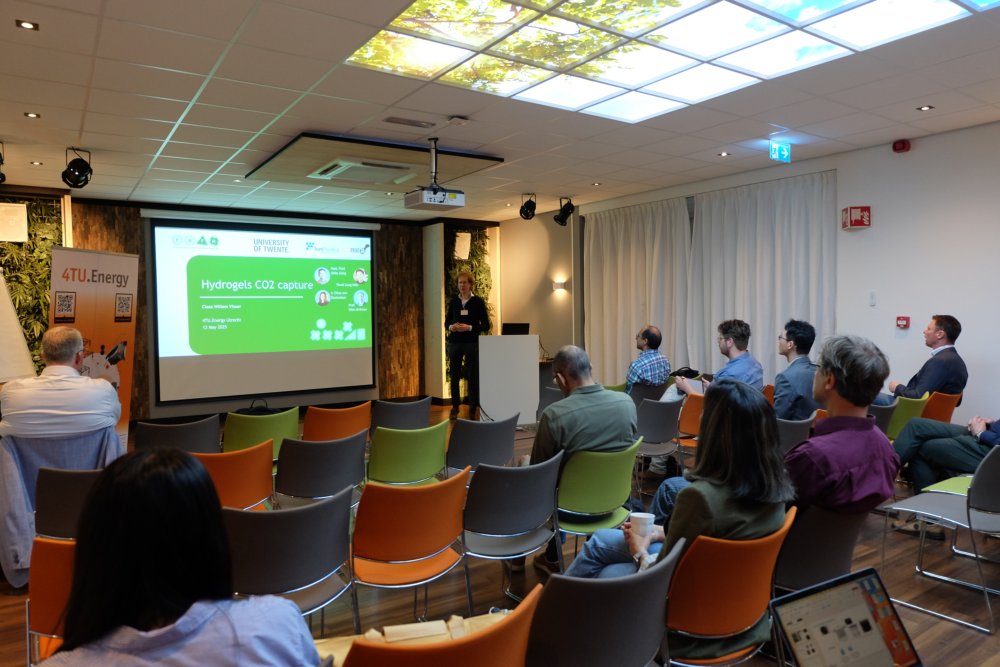
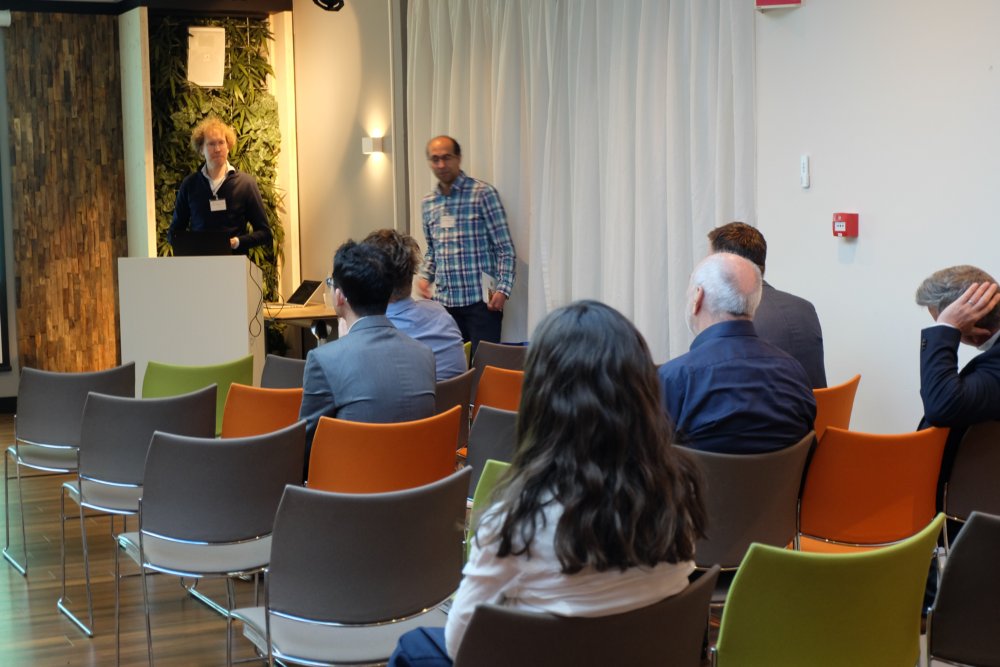
Jingxiu Xie
 Jingxiu Xie is an Assistant Professor in Catalytic Processes for Gas Conversion at the Green Chemical Reaction Engineering research unit of the Engineering and Technology Institute, University of Groningen
Jingxiu Xie is an Assistant Professor in Catalytic Processes for Gas Conversion at the Green Chemical Reaction Engineering research unit of the Engineering and Technology Institute, University of Groningen
Title: Selectivity control between Reverse Water-Gas Shift and Fischer-Tropsch Synthesis in Carbon-supported Iron-based Catalysts for CO2 Hydrogenation
Abstract
CO2 hydrogenation to chemicals and fuels has the potential to alleviate CO2 emissions and displace fossil resources simultaneously via consecutive reverse water-gas shift (RWGS) and Fischer-Tropsch synthesis (FTS), also known as CO2-FTS. As Fe-based catalysts are active and selective for both reactions, their bifunctionality requires a delicate balance between the RWGS and FTS. In this work, we investigated the thermodynamic constraints of RWGS and CO2-FTS, the influence of CO2 conversion on selectivity and the influence of Fe nanoparticle size within the range of 5 to 10 nm.
Reference
W. Meng, B. C. A. de Jong, H. van de Bovenkamp, G. Boer, G. L. Bezemer, A. I. Dugulan, J. Xie. Selectivity Control between Reverse Water-Gas Shift and Fischer-Tropsch Synthesis in Carbon-supported Iron-based catalysts for CO2 hydrogenation. Chemical Engineering Journal 489, 151166 (2024)
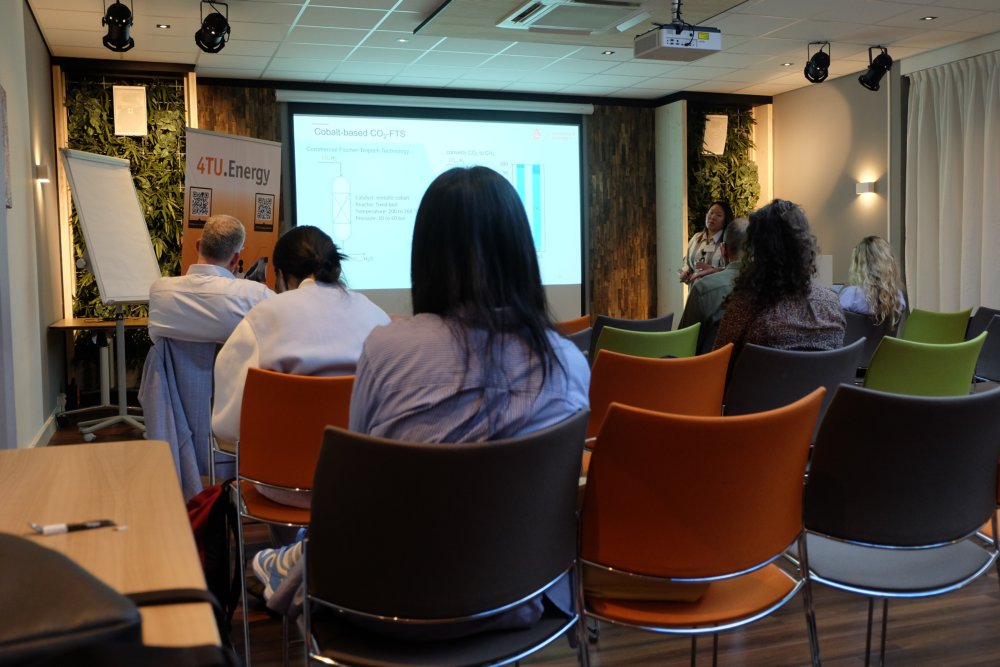
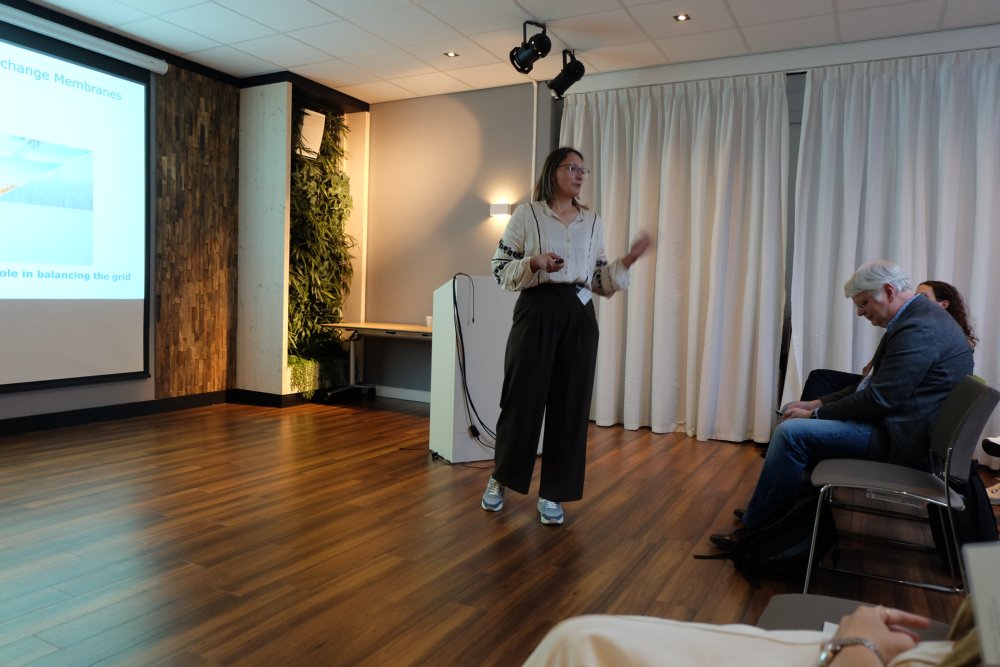
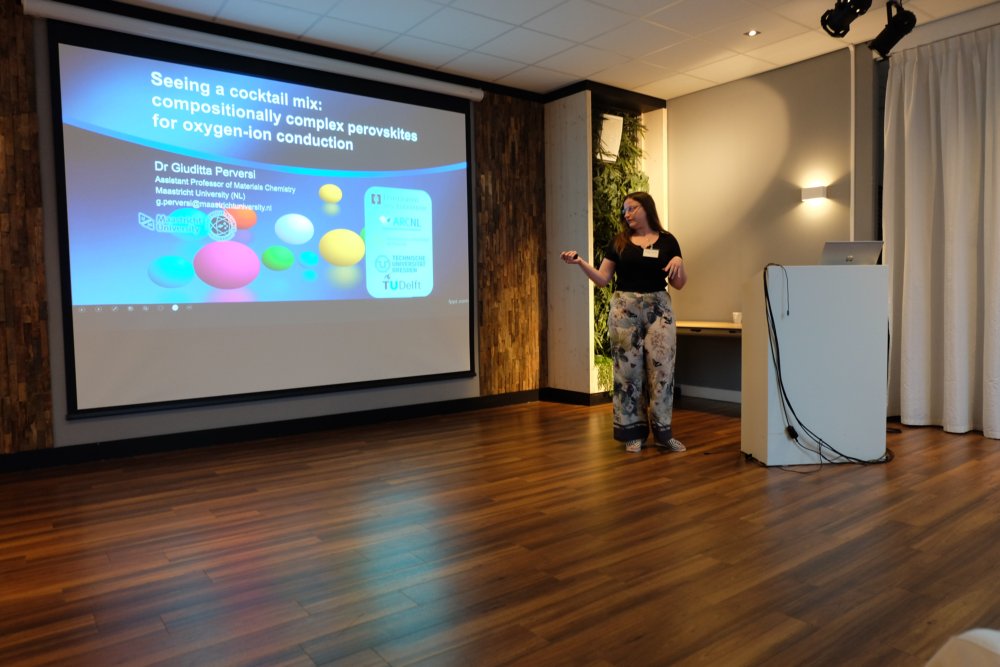
And there was ample time for the poster session and for networking
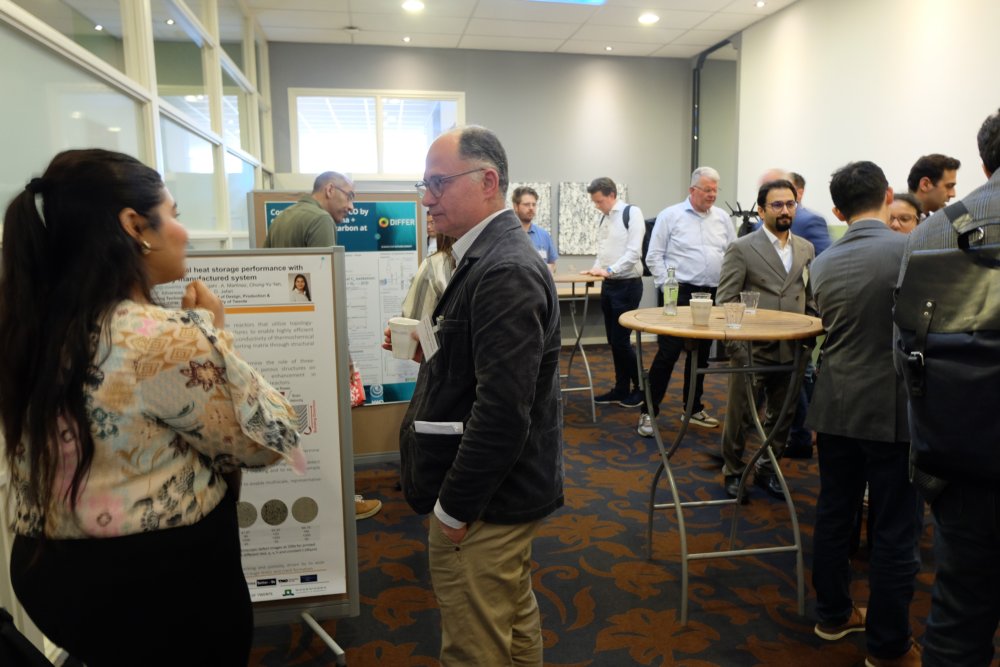
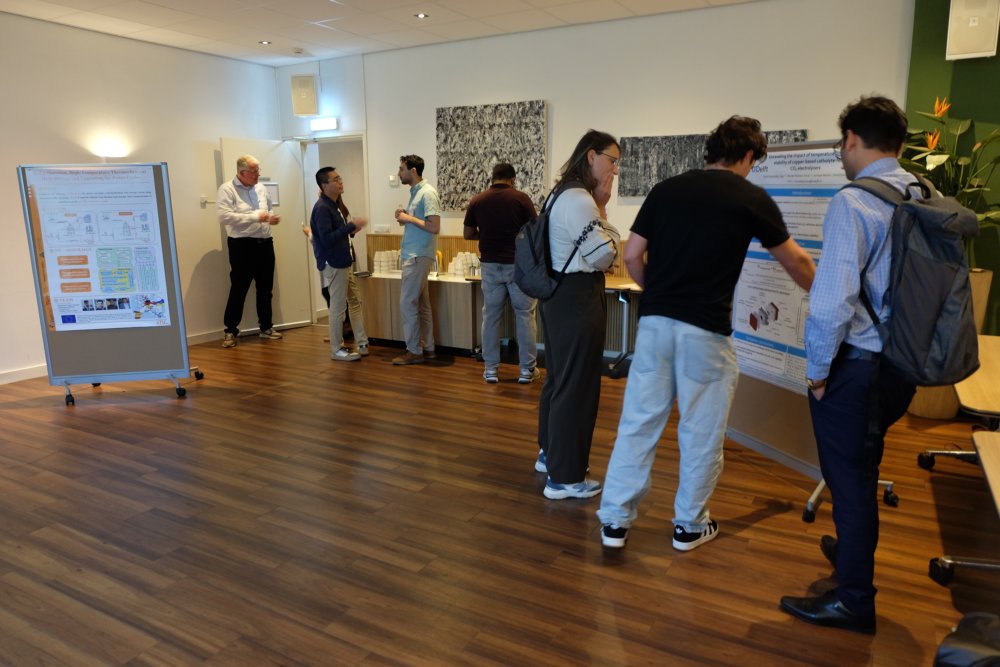

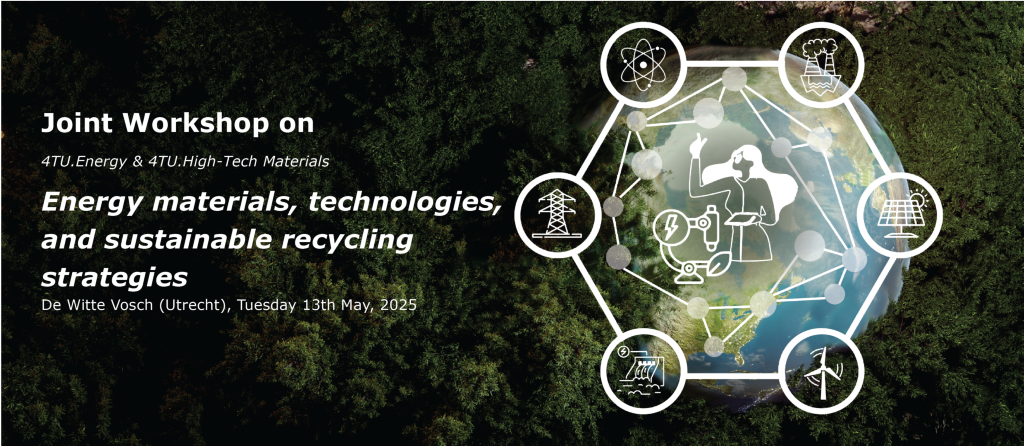
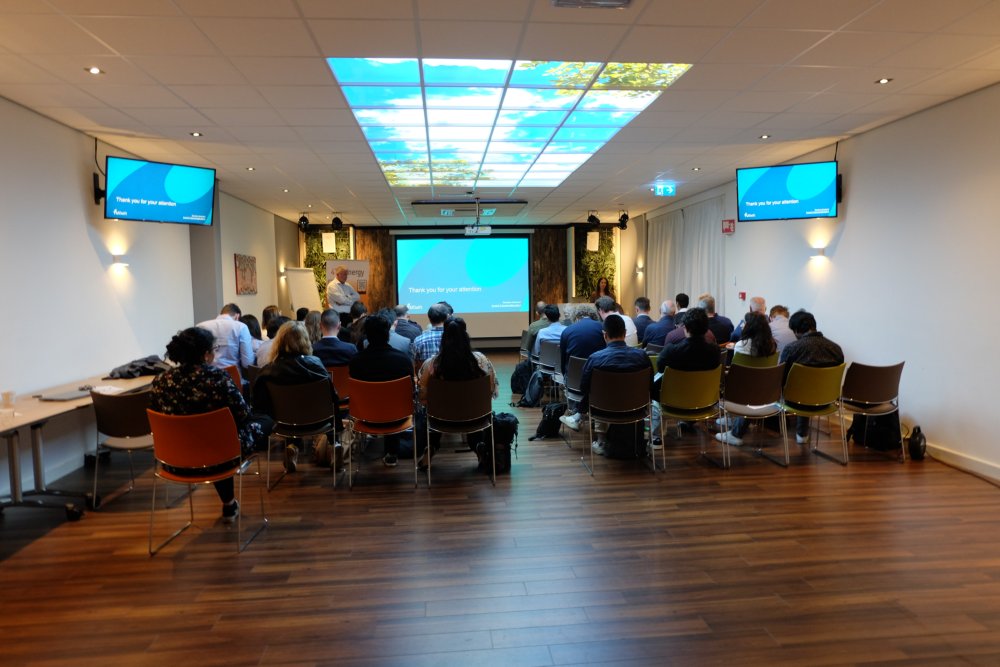

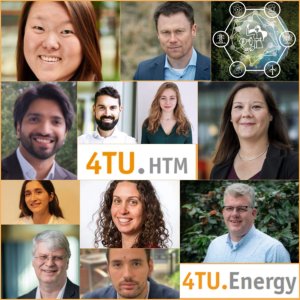 Looking back at the Joint 4TU.Energy & 4TU.HTM Workshop!
Looking back at the Joint 4TU.Energy & 4TU.HTM Workshop!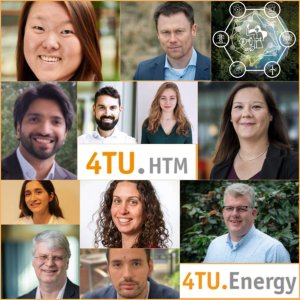 Information
Information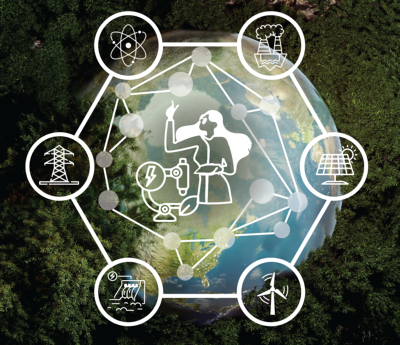
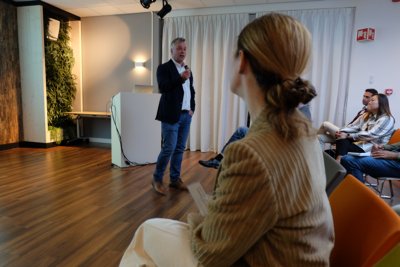 Speakers pitch session
Speakers pitch session